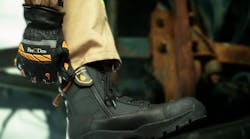Rapid intervention is a big deal. It's a big deal because the intended purpose of rapid intervention operations is to rescue firefighters who are lost, injured, trapped or otherwise unable to escape from a deadly situation. If you can't perform rapid intervention tactics, if you haven't been trained on rapid intervention tactics or if you simply can't successfully complete rapid intervention tactics, there is a great chance a firefighter could be seriously injured or killed.
Now that we know this is important, let's look at a few ideas related to rapid intervention and firefighter survival. These ideas or concepts may be slightly different from what you have been taught and practice. That's fine. Just read on and consider the following:
Point No. 1 — If you are part of a rapid intervention team (RIT) or any other group or team of firefighters assigned to locate a missing, trapped or distressed firefighter, you will almost certainly not find the firefighter and complete the removal. Members of a RIT, standing by outside and waiting to be deployed to assist a firefighter, are doing so with a full self-contained breathing apparatus (SCBA) cylinder. This could be a 30- or 45-minute supply, or even more. If you are already inside the involved building conducting firefighting operations, you have already used some of your air supply. Either way, the effort expended and the tactics required to remove an unconscious firefighter will almost always outlast your air supply. What I am saying is that you will probably not finish the job. Know this when you start so you can split up your team if you have enough members, or you can advise the incident commander to have a backup RIT to be deployed to help you complete the operation.
Point No. 2 — After locating a downed, lost or distressed firefighter, pay particular attention to his or her air supply and keep it simple. Obviously, a firefighter who is lost or down and also out (or nearly out) of air needs an immediate supply of air. There are several ways to accomplish this with different pieces of equipment. Let's establish something here. When a RIT is deployed to assist or locate a firefighter, the members should bring air with them. We used to bring an extra SCBA with us. Now, we have RIT packs that are specially designed to be used to provide air to a firefighter in need. RIT packs have numerous capabilities, including refilling the distressed firefighter's bottle, connecting to the firefighter's facepiece with a RIT pack regulator, or attaching a complete new facepiece and regulator from the RIT pack onto the firefighter.
Keep it simple. Don't mess around with too much when you locate a downed firefighter who needs air. Quickly attach the regulator to the facepiece or place the RIT pack facepiece and regulator on the firefighter. Don't bother trying to refill the bottle. I'm sure that would be helpful somewhere, but not when you initially find a firefighter who needs air.
Point No. 3 — If you find yourself in a situation that results in you transmitting a Mayday, consider converting your SCBA waistbelt into a rescue harness yourself. That way, if you become incapacitated, the RIT can quickly remove you to safety. We have all seen how the standard SCBA waistbelt can be disconnected and then reconnected between a firefighter's legs to enable the RIT to drag or lift you without pulling the SCBA off during the rescue. If you have practiced that evolution, you know it can be difficult to complete properly and takes a little time to finish. Since how long it takes for them to rescue you is important to you, why not get that job done before you go down? It won't take much time, since you are fully conscious and able to get it done quickly, and it will not impede your ability to continue looking for a way out or to solve the problem for which you called the Mayday. After calling the Mayday and providing the standard information to the incident commander, let command know that you have already converted the SCBA waistbelt to a rescue harness. Now, when the RIT locates you, the members can immediately handle any air needs you may have and then get right to the removal element of the operation.
Rapid intervention operations are almost always custom built and specific to the situation at hand. Next time you are conducting RIT training, try one of the above ideas and see whether they can help you get the job done faster, safer or more efficiently.
JOHN J. SALKA Jr., a Firehouse® contributing editor, is a 28-year veteran battalion chief with FDNY, the commander of the 18th battalion in the Bronx. Salka has instructed at several FDNY training programs, including the department's Probationary Firefighters School, Captains Management Program and Battalion Chiefs Command Course. He conducts training programs at national and local conferences and has been recognized for his firefighter survival course "Get Out Alive." Salka co-authored the FDNY Engine Company Operations manual and wrote the book First In, Last Out — Leadership Lessons From the New York Fire Department. He also operates Fire Command Training (www.firecommandtraining.com), a New York-based fire service training and consulting firm.





